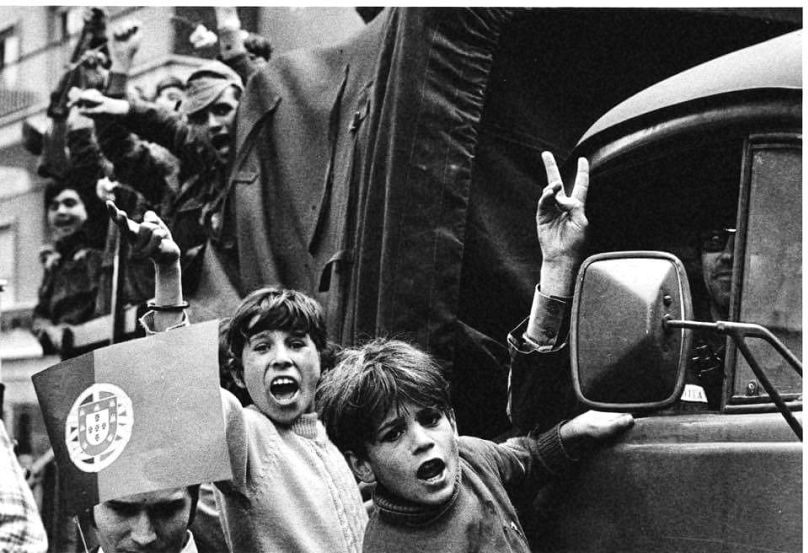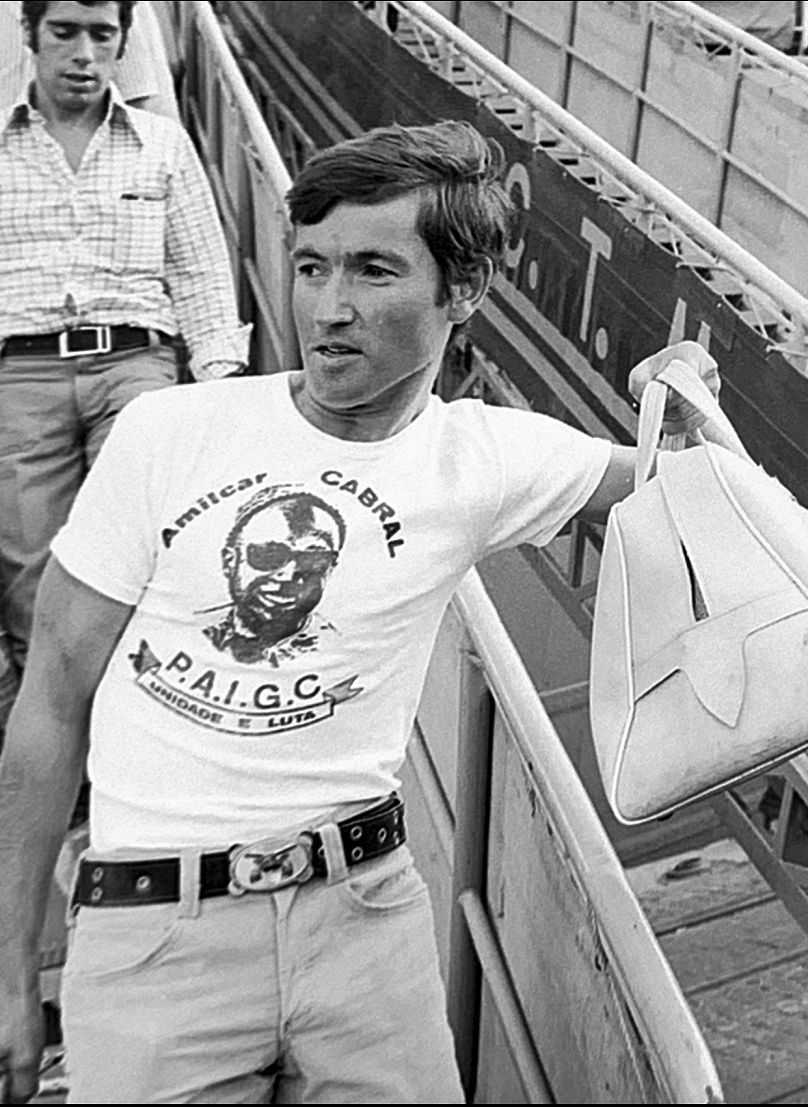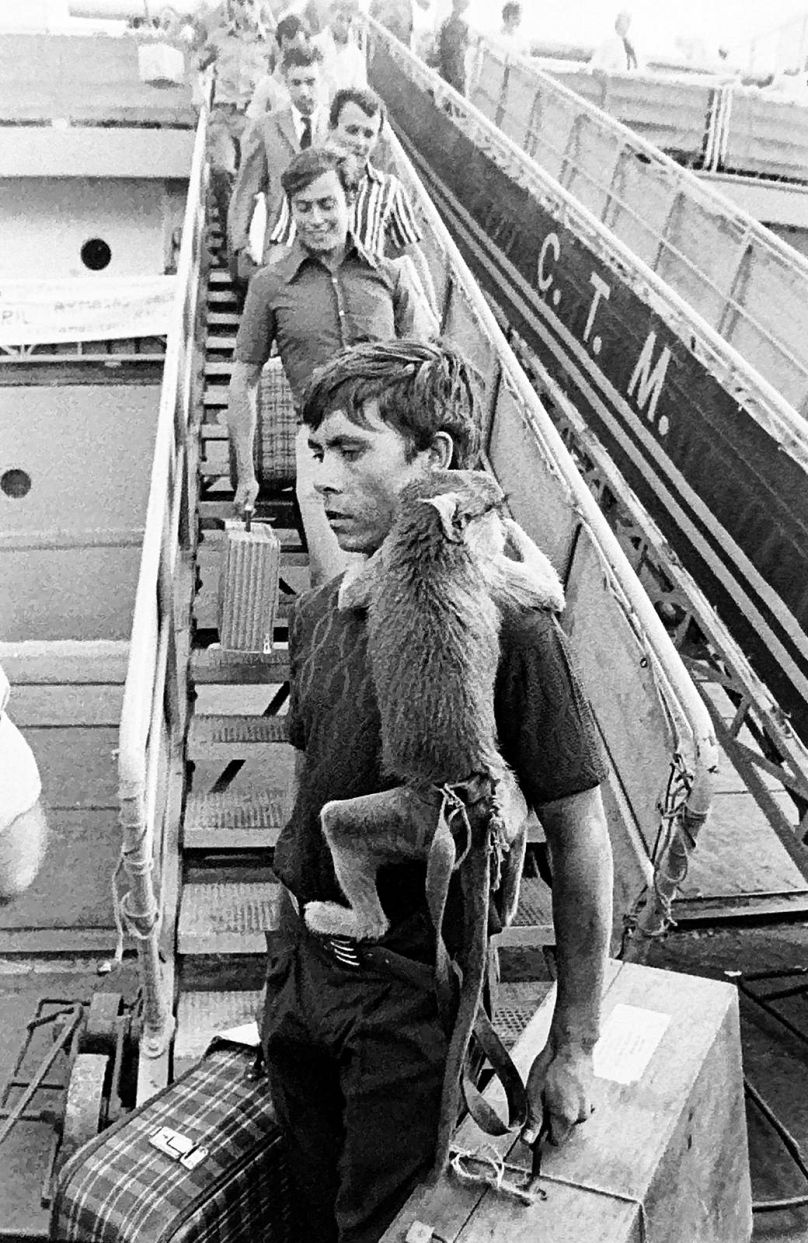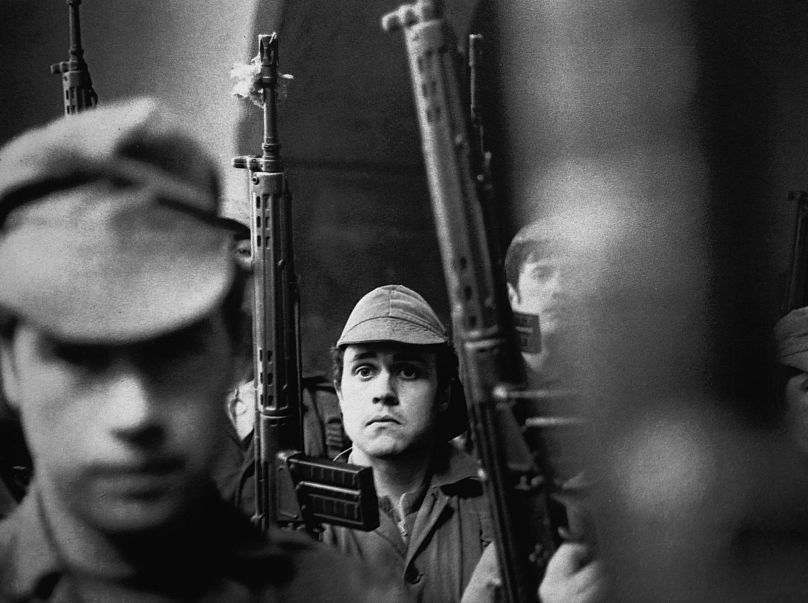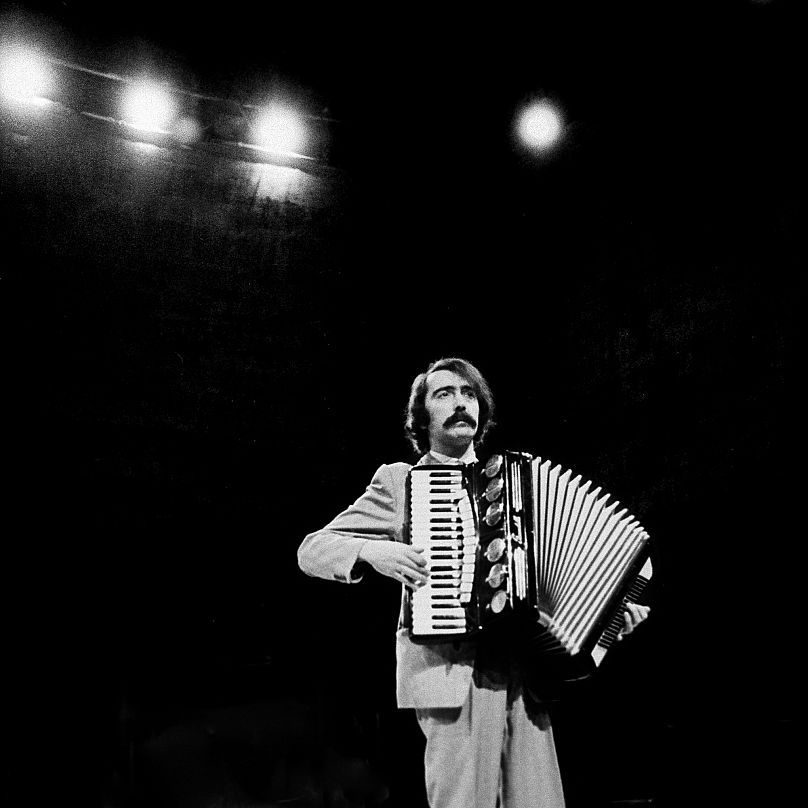When the revolution of 25 April 1974 swept through Portugal, Luiz Carvalho had no idea it would shape the course of his life. Then a 19-year-old architecture student with a passion for photography, he took to the streets of Lisbon with his Nikon F, capturing the unfolding scenes of a country in transformation.
Those early images marked the beginning of a career that would span more than two decades, working for the weekly Expresso and as a correspondent for SIPA Press.
Now, 50 years on, Carvalho revisits that turbulent chapter in Portugal’s history – the period between the revolution and the failed coup of 25 November 1975, known as the Ongoing Revolutionary Process (PREC) – in a new book and exhibition titled 50DE25.
On display at the Sociedade Nacional de Belas Artes in Lisbon until 23 August, the exhibition features iconic photographs from the era alongside more recent portraits of key figures who shaped those historic events.
When the exhibition opened, Luiz Carvalho spoke to Euronews Culture about some of his favourite photos:
Luiz Carvalho: This photo summarises those days of great joy. It was taken on 1 May 1974. I was there to find details of what was happening. When I see this military lorry, with the soldiers at the back demonstrating with their rifles in the air, the kids doing the V for victory, the officer at the front in the van also doing the V for victory, this photograph is perfect for me from an aesthetic point of view. There’s nothing too much or too little. Of course, there are other photos in this series, some vertical, but this is the one that, for me, represents the decisive moment of 25 April.
LC: This is the arrival of the first troopship from Guinea-Bissau. I was always listening to the radio, which at the time was the favoured means of information. I was in my architectural office and I heard that the ship was arriving. I left at 4pm and went to the Rocha do Conde de Óbidos pier. It was incredible to see the people waiting for the soldiers and how they presented themselves: one was wearing a T-shirt of Amílcar Cabral (founder of the PAIGC, the independence movement of Guinea-Bissau and Cape Verde), in other words, of those he had been fighting against, and a belt with two pistols crossed on the buckle.
LC: Others were carrying exotic animals, which was normal at the time.
LC: A soldier lost, sad, among shadows, on 26 April (1974). It could have been on 25 November, like in that famous photograph by Alain Mingam of the paratroopers at Tancos crying. It’s a photograph I really like and I’d rather not say it was taken on 26 April, because it’s a photo that represents the end of the party. Or perhaps the beginning of the party, because the soldiers didn’t really know what they were doing there. They adopted the attitude of defending the people, of always being on the side of the people, and that happened. It was one of the magical aspects of our revolution, so this photo has a very special meaning for me.
LC: The person I photographed during this period who made the biggest impression on me was José Mário Branco, with whom I had a lot of contact and worked in the theatre. He was a person of incredible humanity, who thought for himself. He was a man of the left, in the sense that he defended values, but he wasn’t a party man. He may have collaborated with some parties at one time or another, but he was independent. Very cultured, an extraordinary musician, he made a big impression on me as an actor and musician. This photograph was used for the cover of the album “Ser Solidário” (1982). José Mário Branco made a big impression on me, not because of his politics, but because of who he was.



